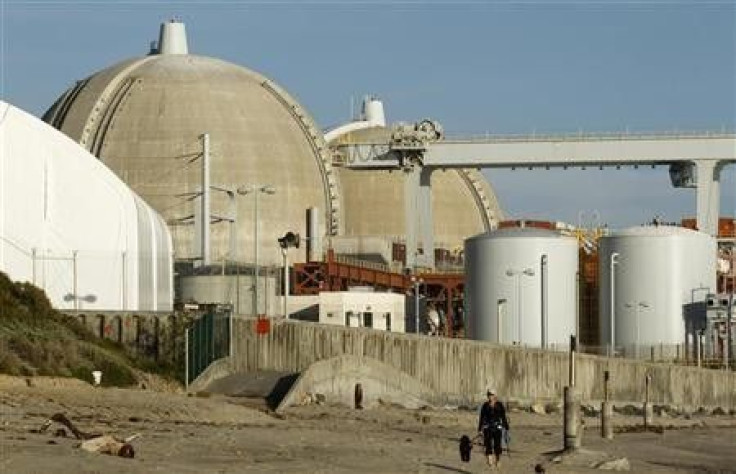California Nuclear plant shuts down reactor as precaution

One of two reactors at the San Onofre nuclear power station in Southern California was shut down on Tuesday after a small leak was detected in a steam generator tube, but the incident posed no risk to the public or plant workers, the facility operator said.
The reactor unit, which normally provides 1,100 megawatts of electricity, was shut down at about 5:30 p.m. local time as a precaution and will remain off line for a least a couple of days, said Gil Alexander, a spokesman for Southern California Edison.
The plant's only other reactor already had been deactivated for a scheduled refueling and technology upgrade, he said. But the utility has ample reserve electricity, which it buys from independent power producers, to continue meeting customer demands while the two reactors are off line, the company said.
We don't expect any impact on our customers tomorrow, Alexander told Reuters.
The two reactors together normally produce enough electricity to serve 1.4 million average-sized households in Southern California.
The leak, which Alexander called very minor, was initially detected by sensors and occurred in the closed system that circulates water from the reactor to thousands of steam-generation tubes.
Although the water is radioactive, the leak was confined within the containment vessel surrounding the reactor, and there was no release of radioactive material to the atmosphere, Alexander said.
He said the incident was so minor that neither Edison procedures nor Nuclear Regulatory Commission rules required a shutdown, but the company decided to turn off the unit as a precaution.
NRC inspectors who work at the plant, located just south of San Clemente, were immediately notified of the mishap.
Alexander said it takes about 12 hours for a newly halted reactor to cool down fully, so inspection crews are not expected to enter the area where the leak occurred until some time on Wednesday.
Unlike the case of an ammonia leak inside the plant in November, operators saw no need to evacuate any workers on site as a precaution, Alexander said.
© Copyright Thomson Reuters 2024. All rights reserved.











